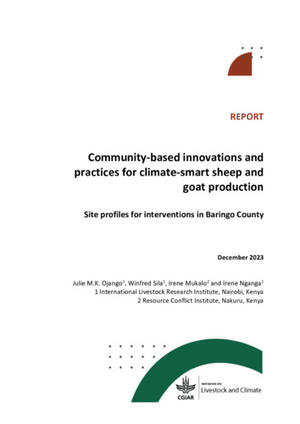
Ethiopia National Dairy Development Strategy 2022–2031
Abstract
Ethiopia has the largest livestock population in Africa. According to a CSA (2021) livestock sample survey, the country possesses 70.3 million cattle, 42.9 million sheep, 52.5 million goats and 8.1 million camels. The livestock sector contributes about 45% of the agricultural GDP, 18.7% of the total national GDP, and 16–19% of the total foreign exchange earnings of the country (Behnke and Metaferia 2011). In Ethiopia, dairy production depends mainly on indigenous livestock genetic resources of cattle, camels and goats. Cattle are the largest contributors to the total national annual milk output, followed by camels (CSA 2021). Ethiopia has a huge potential for dairy development. The large and diverse livestock genetic resources, existence of diverse agro-ecologies suitable for dairy production, increasing domestic demand for milk and milk products, developing market opportunities, and proximity to international markets all contribute to the potential and opportunities for dairy development in the country. However, dairy development has been hampered by multifaceted, production system-specific constraints related to genotype, feed resources and feeding systems, access to services and inputs, and low adoption of improved technologies. An inefficient marketing system and absence of clear policy support, poor access to finance, weak regulatory system to enforce government rules and regulations are also among the systemic constraints to the development of the Ethiopian dairy sector. Moreover, the sector is constrained by poor rural infrastructure, high post-harvest losses, weak value addition and poor product quality and safety. The government of Ethiopia plans to increase milk production four-fold by 2031 through targeted interventions aimed at improving the productivity of dairy cows, camels and goats. Investment in the dairy sector has been prioritized in the ten-year perspective plan of the government. It is anticipated that the plan will contribute to unlocking major bottlenecks in genetics, improved technologies, feeding, health, input and output marketing, value addition, product quality and consumer safety. It is also envisaged to reduce post-harvest loss of milk and milk products and enhance use of improved technologies in the dairy sector. This strategy document aims to guide implementation of the ten-year perspective plan and associated initiatives such as the dairy project in the Ten-in-Ten and Yelemat Tirufat initiatives developed to transform the dairy sub-sector. It highlights key interventions to be implemented in the short-, medium- and long-term plan periods from 2022 to 2031. The document identifies strategic issues and priority interventions in the short-, medium- and long-term in dairy breed improvement, feeds and nutrition, biosecurity and dairy health management, milk quality and safety, dairy business management and market development, investment in commercial farming and processing industry, extension linkage, capacity development and some cross-cutting issues. It also highlights various roles and responsibilities of different actors.
Citation
Legese, G., Gelmesa, U., Jembere, T., Degefa, T., Bediye, S., Teka, T., Temesgen, D., Tesfu, Y., Berhe, A., Gemeda, L., Takele, D., Beyene, G., Belachew, G. Hailu, G. and Chemeda, S. 2023. Ethiopia National Dairy Development Strategy 2022–2031. Addis Ababa, Ethiopia: Ministry of Agriculture, Federal Democratic Republic of Ethiopia.








